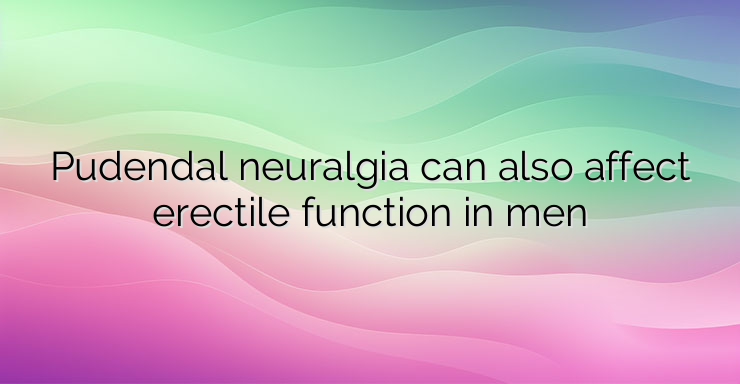What is pudendal neuralgia? The pudendal nerve (n. pudendus) provides sensation in the perineal area, including the penis, scrotum and anus. It is responsible for the muscles in this area, including the external sphincters that control the bowels and bladder. This nerve also plays a key role in bowel, bladder, and sexual function control. There are several places along the path of the pudendal nerve where it can be compressed by other structures, causing irritation. When this happens, pain, numbness, or unusual sensations may occur anywhere along the nerve, from the tip of the tailbone to the tip of the penis. This pain is known as pudendal neuralgia. What are the symptoms of pudendal neuralgia? Pudendal neuralgia pain is usually described as burning or stabbing, and numbness may also occur. Symptoms are often worsened by activities that involve bending the leg, such as sitting or squatting. Standing or lying down often relieves symptoms. Because of the many functions of this nerve, pressure on it can also contribute to other troubling symptoms nearby, such as erectile dysfunction, pain during ejaculation or urination, urgency or frequent urination, bladder or bowel incontinence, and other similar complaints. Sometimes pain in other areas may also be present. For example, many men with pain associated with pudendal nerve involvement also experience back pain or pain in the buttocks. A visit to the doctor is recommended for the appearance of new symptoms related to erection, urination or bowel function or any significant worsening of old symptoms. Sometimes these symptoms have an underlying cause that needs to be diagnosed. However, if no cause can be found for the complaints, there is a good chance that the symptoms are due to pressure exerted on this nerve by muscles or other tissues. In this case, pelvic floor physiotherapy can be helpful in treatment. Causes of pudendal nerve damage include: Accidents and trauma; Complications from operations in the pelvic area such as prostatectomy or surgery to correct pelvic organ prolapse; Diabetes and diabetic neuropathy; Prolonged pressure on the nerve from activities such as cycling; Radiotherapy; Tumors or cysts. References: 1. Health Organization for Pudendal Education. Chronic Pelvic Pain, Genital Pain, and Pudendal Neuralgia 2. National Health Service. Pudendal neuralgia 3. National Institutes of Health. Genetic and Rare Diseases Information Center. Pudendal Neuralgia 4. Pelvic Pain Foundation of Australia. Pudendal Neuralgia


Leave a Reply